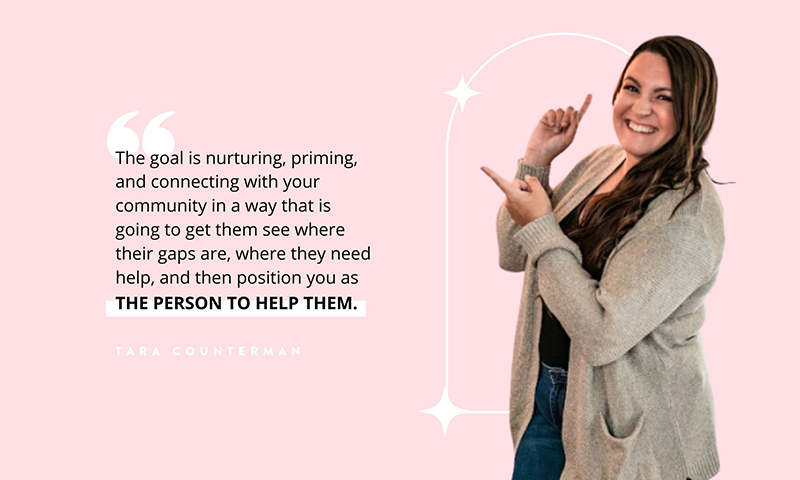How to Batch Your Content to Increase Your Outreach
September 28, 2021
When we put content out there, the hard truth is that it has a pretty short lifecycle. That goes to say that it’s only being viewed by our audience for a short window of time.
And as a busy CEO, that’s a tough realization. Demoralizing, even. This is because you could be putting tons and tons of time into your content, only for it to be viewed for a short period of time. And I get it, that’s frustrating.
But lucky for you, I have a hack that can completely change the lifecycle of how your content is viewed. In this post, I’m sharing how batching content can change the way your content is viewed and how you reach your ideal clients.
If you’re looking to take some of the pressure off of yourself to repeatedly create content from scratch, then keep reading to gain an understanding of how you can work smarter on this aspect of your business.
Turning Macro-Content Into Micro-Content

Focusing on using macro content to generate micro-content can be a game-changer for your business in the best of ways. In so many cases, CEOs are not maximizing the content they’re creating, which is dangerous, because your time needs to be protected.
This issue likely stems from a lack of intentional content. When you’re creating content on the fly – an Instagram post here, a story there, a reel once in a while, and so on – it’s tough to connect all of these pieces to overarching goals. This also leads to inconsistent messaging. Plus, doing things this way means you’re sitting down to create content time and time again, which causes a lot of wasted time.
I like to compare this to the act of baking bread, which is something my daughter and I love doing together. However, in this hobby, we realized that we were spending a lot of time pulling out all the ingredients, measuring them, getting all of our tools out and ready, cleaning up, and putting the dishes and tools away.
But then an idea struck. Whenever we’re making a batch of bread, we take the time to measure out the dry ingredients and stow them away for future use, saving us a lot of time the next time we go to bake.
You can apply this example to a sale. You create on multiple platforms to connect with people. These are the “ingredients”, if you will, that go into a sale. If you need to start from scratch on that content every time, it’s time-consuming. That results in a lot of time being wasted in your preparation and execution.
That’s where the idea of taking macro content – or content that is more long-form – and turning it into micro-content to save you time in the process, and at the same time, convey a more consistent message across the board.
Directing Your Client Through Micro-Content

Let’s go back to the bread example. When you have a podcast, you’re baking all of the content into that episode or series of episodes, which allows you to nurture and prime your ideal client. This leads to the sale, connecting you to your community.
But after the “bread” comes out of the oven, you take it to the next step and slice it up. These slices are the other pieces of content you’re putting out there to reach your audience.
While podcasts pull listeners in and reinforce your desired messages, they are also useful in the fact that they can be repurposed into more content. This could come in many forms:
- IGTV posts
- Carousel posts
- Quotes
- Instagram stories
- Blog posts
- And more!
And here’s the great thing about this micro-content. It directs your audience and reaffirms what they believe, as all of these “slices” are a continuation of your consistent messaging. Pretty cool, right?!
What’s even cooler is that this act of repurposing content on different platforms and in different ways allows you to stretch the lifecycle of the content altogether.
Once a podcast episode is recorded, your team can support you by going back to that content and leveraging it even more. That “new”, micro-content redirects your audience to the podcast episode, strengthening the connection.
Your podcast is also something that should be constantly referred to in your micro-content. For example, if you’re doing a mini-training on your Instagram stories, make sure to point to the podcast episode where you expand on those topics more. This can lead to people going to your podcast and binging it from the first episode, which is really powerful from a connection standpoint.

LISTEN ON SPOTIFY | LISTEN ON APPLE PODCASTS | LISTEN ON GOOGLE PLAY
Hacking the Content Lifecycle
As I mentioned at the beginning of this post, the average content lifecycle is a short one. But intentional content hacks this lifecycle and extends it, which is obviously super useful. The key here is that your content has to focus on your goals, which is something I talked more about in my last post.
Because your audience is busy and distracted, something like a Facebook Live will have low viewership, most likely. So you have to wonder, how can we take long-form content and turn it into micro-content? How can we make sure that the content we put out there serves our community and drives them intentionally towards the thing you want them to go towards?
And while sometimes you need to put that content out there that has a naturally shorter lifecycle, it can still be done intentionally and in a much smarter way.
When your podcast or whatever long-form content you’re using is batched, it’s simple to repurpose the intentional content that exists there into those more quick hit items. This can even be done with the help of a team, alleviating a lot of your own time and effort.
Make the Time You’re Putting in Work for You!: The Bottomline

I hope this post has opened your eyes to the idea that you want to figure out where you can repurpose the things you’re doing so that you can be more effective and have more time.
Batching content intentionally so that it revolves around your goals is a huge part of this. From that content, you can use that long lifecycle content (like a podcast episode) to produce short lifecycle content (like social media posts) that matches the consistent messages you are looking to convey to your audience.
This is the simple equation for making the most out of your time and squeezing the most out of your content.
Be sure to connect with me more over on Instagram, I’d love to hear what you thought of this post and what your major takeaways were.
See you back here in the next one!